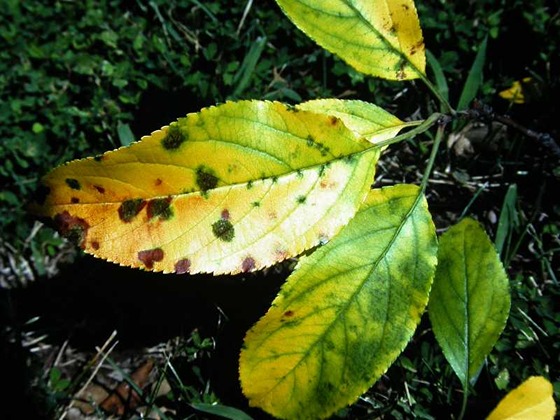How to Grow Butterfly Bush: Great Tips
Blue Chip butterfly bush exhibits a compact and mounded growth habit, making it fall into the category of miniature Buddleia. The plant bears numerous small flowers that gather in attractive spikes. Although referred to as bluish-purple, the flowers only contain a subtle hint of blue color. The flowering period extends from midsummer through October.
A significant advantage of this hand-pollinated cultivar is its non-invasiveness, unlike standard butterfly bushes, which have become invasive in many parts of North America. The developers have successfully created a sterile shrub that does not spread.
For optimal growth and successful overwintering, it is recommended to plant Blue Chip in the spring. This allows the shrub to establish a robust root system throughout the growing season.
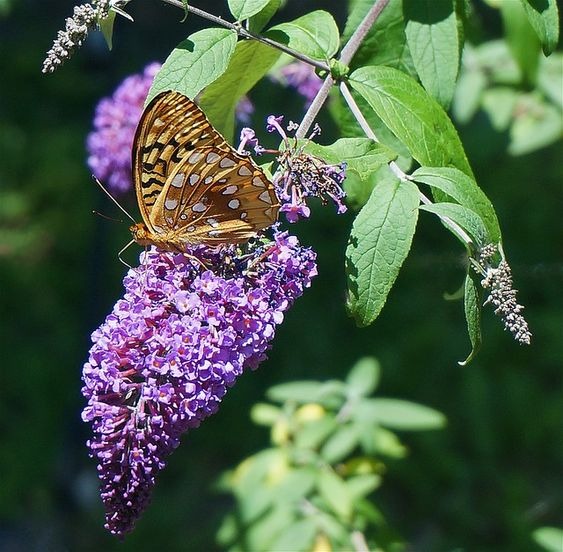
Common Name: Blue Chip butterfly bush
Botanical Name: Buddleia davidii ‘Blue Chip’
Family: Scrophulariaceae
Plant Type: Shrub
Soil Type: Well-drained
Soil pH: Acidic, neutral
Bloom Time: Summer, fall
Flower Color: Blue, purple
Mature Size: 24-36 in. tall, 24-36 in. wide
Sun Exposure: Full
Hardiness Zones: 5-9 (USDA)
Native Area: Cultivar, no native range
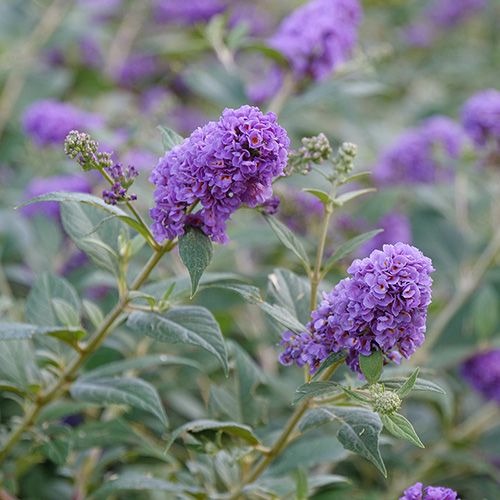
How to Care
Blue Chip is a wonderful addition to any pollinator garden, as it not only attracts butterflies but also hummingbirds and bees. Its unique flowering time during the latter part of the growing season allows it to showcase fall flowers when few other shrubs are in bloom, thus extending the sequence of flowering in your garden.
Thanks to its compact size, this miniature butterfly bush fits perfectly in small yards and can even be cultivated in containers.
When planting Blue Chip, the primary consideration is ensuring it receives ample sunlight. Inadequate sunlight may delay its bloom time.
Fortunately, Blue Chip is a low-maintenance plant, and there’s no need to deadhead the spent flowers. It is an easy-to-care-for shrub, making it a hassle-free choice for any garden.
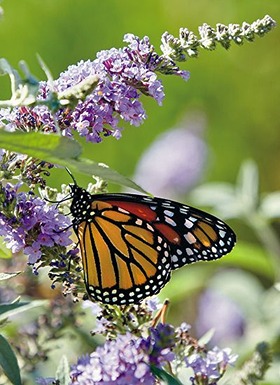
Light
For the best flower display, this plant requires full sun. Although it can tolerate lower light levels, its blooms may not be as abundant or vibrant in such conditions.
Soil
Blue Chip butterfly bush thrives in soil that is slightly acidic to neutral, with a pH range of 6.0 to 8.0, and it should have good drainage. If the soil lacks proper drainage, the plant is susceptible to root rot. In areas with clayey soil, when planting, it is advisable to create a shallower planting hole than usual, ensuring that the base of the plant sits slightly above ground level. This precaution helps prevent water logging and promotes healthier growth.

Water
In the first year, it is essential to water young buddleia plants generously to aid in their establishment. However, once they are established, they typically require only around an inch of water per week from either natural rainfall or irrigation. As the plants mature, they become relatively drought-tolerant shrubs, capable of withstanding periods of limited water availability.

Fertilizer
The butterfly bush is not a plant that requires excessive feeding. However, if you wish to enhance its growth, apply a balanced fertilizer in the spring following the recommended amount stated on the product label. In colder climates, mulching in the fall provides winter protection, but it’s crucial to keep the mulch away from the base of the plant to prevent the risk of root rot.
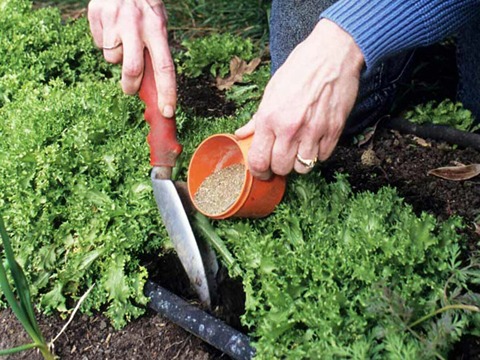
Types of Blue Chip Butterfly Bush
The initial cultivar in the miniature butterfly bush series known as Lo & Behold was ‘Blue Chip.’ As a result, you may frequently encounter this plant referred to as ‘Blue Chip Lo & Behold.’ The series was developed at the Raulston Arboretum in North Carolina.
‘Lo & Behold Blue Chip Jr’ is a more compact cultivar, reaching a height and spread of 1 to 2 feet. It features delightful, rich lavender-blue flowers with a fragrant aroma.
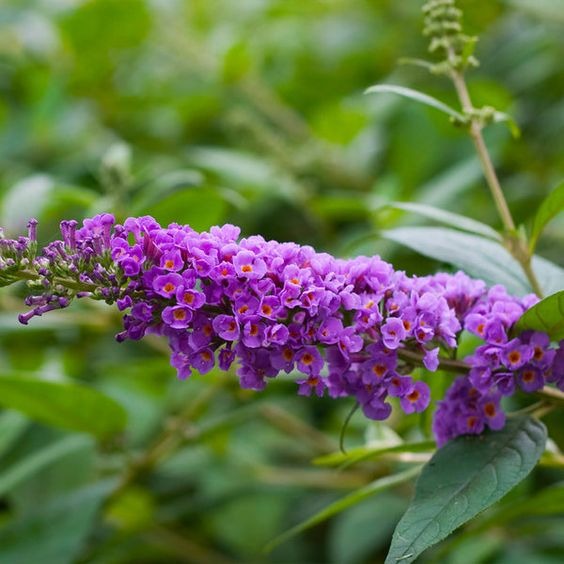
‘Lo & Behold Pink Micro Chip’ is a dwarf cultivar, growing up to a height and spread of only 18 to 24 inches. It showcases charming orchid-pink flowers and has a mounded growth habit.
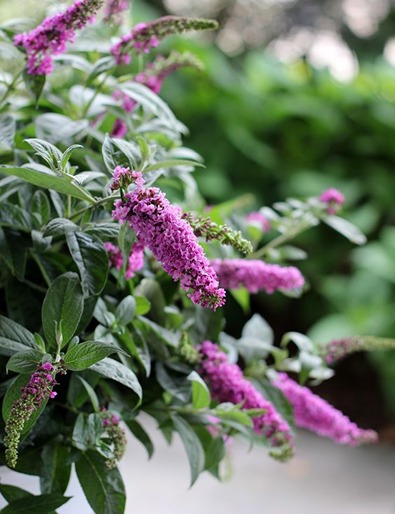
‘Lo & Behold Purple Haze’ exhibits fragrant purple-blue flowers and has a spreading growth habit, making it an attractive addition to any garden.

How to Prune
The butterfly bush flowers on new growth, and while pruning is not necessary, it can be done if you prefer to maintain a smaller size for your shrub. Since the Blue Chip butterfly bush already has a natural compactness, pruning is even less essential. However, it has been observed that pruning can lead to improved flowering.
During the winter, it is recommended to leave the woody stems and branches intact as they offer some protection against the cold. When the spring arrives, and green leaf buds have emerged, that’s the appropriate time to prune the plant. Trim the stems just above those buds to encourage healthy growth.

How to Propagate
All the Blue Chip butterfly bush cultivars are protected by trademarks, and propagating the plant through methods such as vegetative cuttings, plant division, or seeds would be a violation of copy right law.
Potting and Repotting
Due to its small size, this particular variety is an excellent choice for container gardening. When selecting a container, opt for one that is at least twice as deep as the original nursery container and has sufficient large drainage holes. Terracotta containers are recommended as they allow excess moisture to evaporate, and they do not heat up as much as plastic containers in the summer heat. Fill the chosen container with a lightweight, fast-draining potting mix.
Keep in mind that container plants require more frequent watering, especially on hot summer days. It is advisable to water them daily during such times. Regularly check the moisture level of the soil and water the plant as needed to ensure its well-being.

Overwintering
The butterfly bush is resilient in USDA zone 5 and does not require winter protection when planted in garden soil. However, when grown in containers, it is vulnerable to root damage caused by freezing temperatures, necessitating winter preparations. Several approaches can be taken, such as relocating the container to a sheltered spot or creating an insulating enclosure around it to safeguard it from the cold.
Common Pests and Plant Diseases
Serious pests and diseases seldom trouble butterfly bushes. However, in some cases, they may encounter issues with spider mites, and in southern climates, nematodes can pose a concern.

How to Get Bloom
One of the main reasons for the lack of blooming in the Blue Chip butterfly bush is insufficient sunlight. If the plant is situated in an area with excessive shade, you may not have to relocate it entirely. Instead, trimming other trees and shrubs nearby can be beneficial in allowing more sunlight to reach the butterfly bush and potentially promote blooming.

Common Problems
Yellowing and shedding of leaves may result from rhizoctonia, a fungal root rot that develops in waterlogged soils lacking proper drainage. Butterfly bushes are not well-suited to such conditions and may be adversely affected by this fungal disease.
